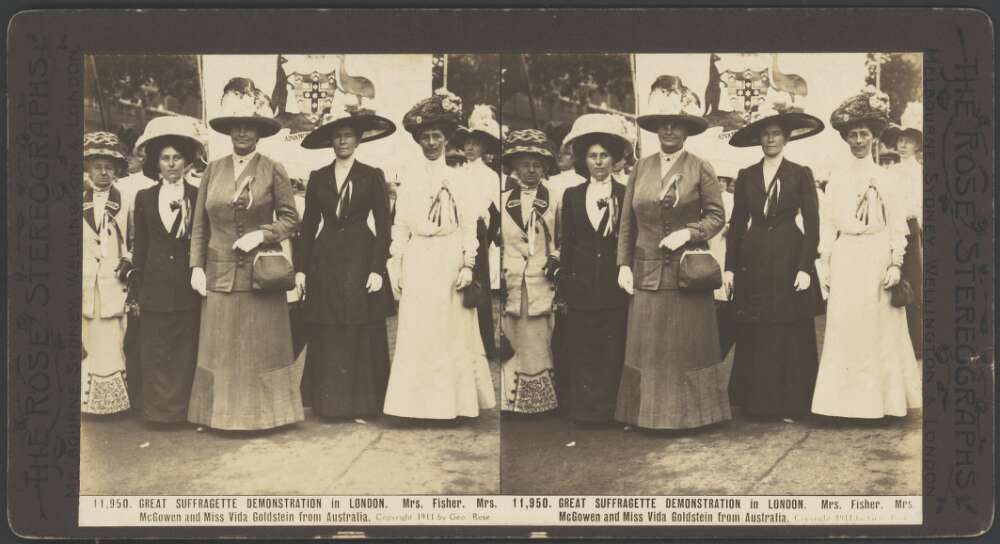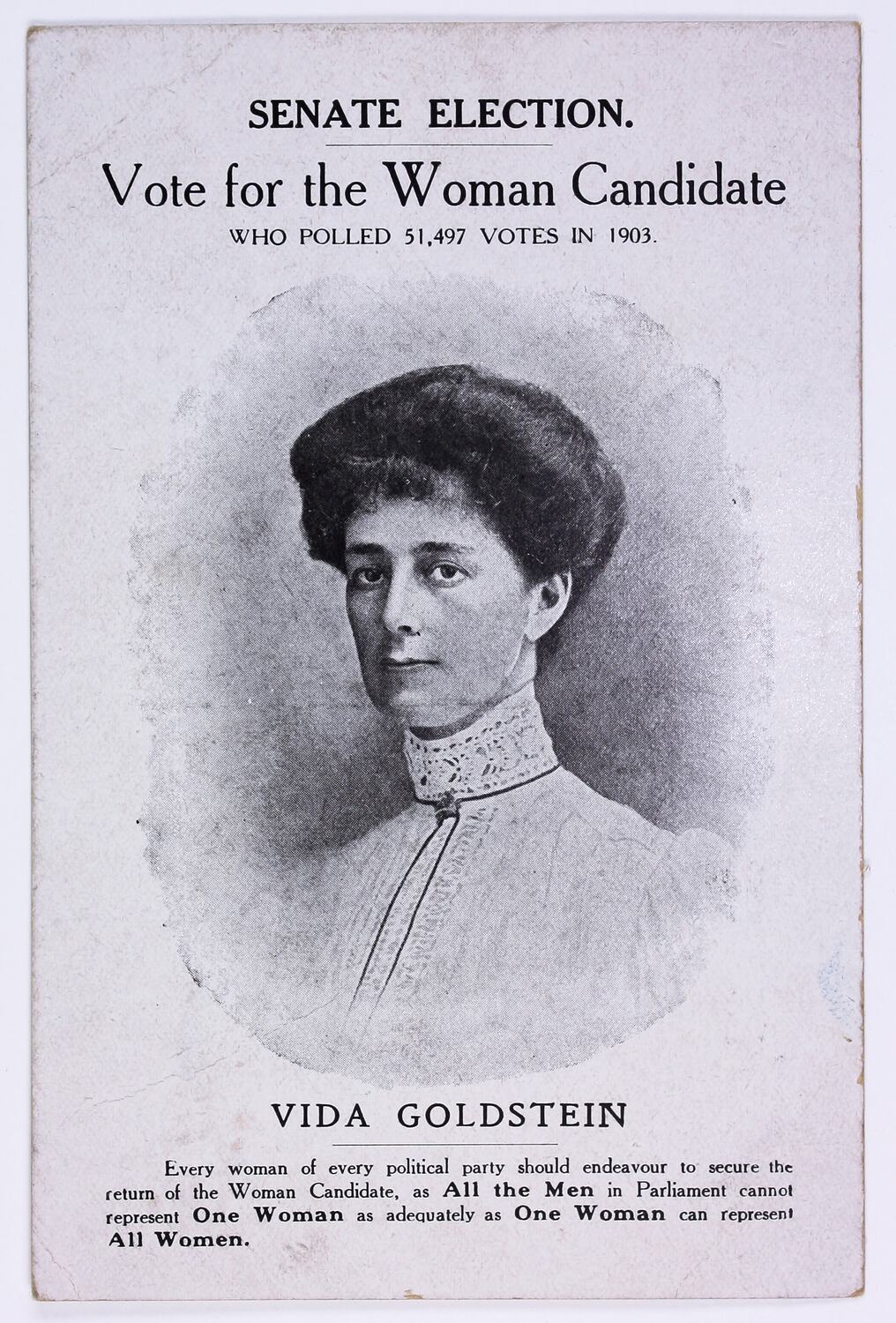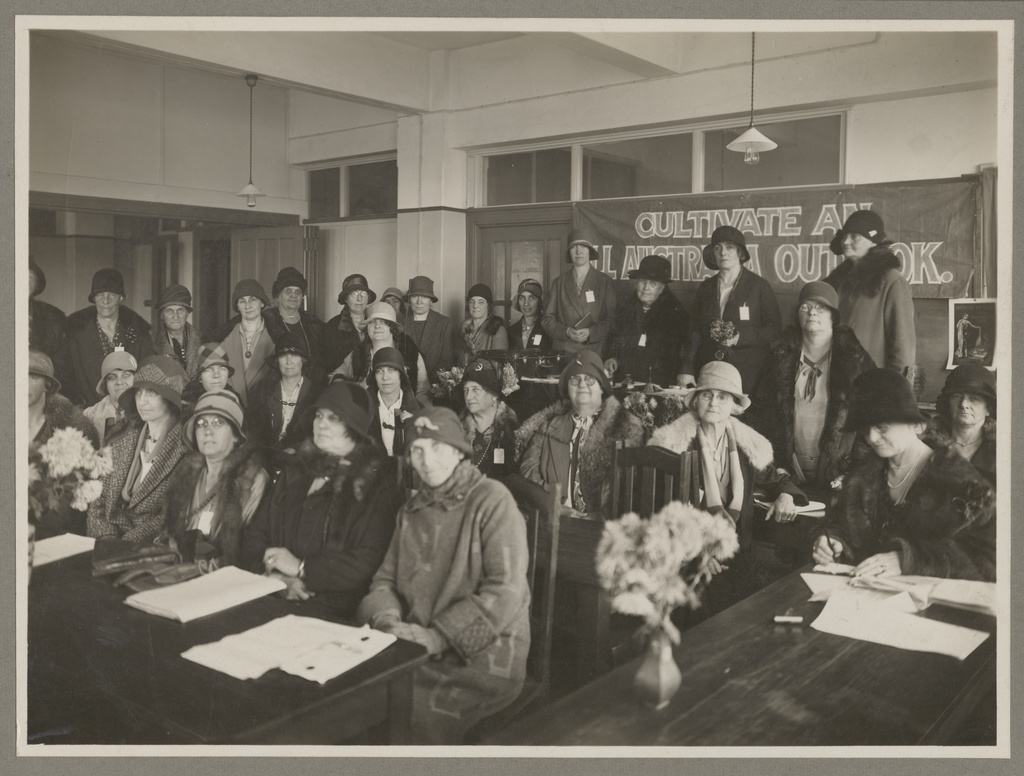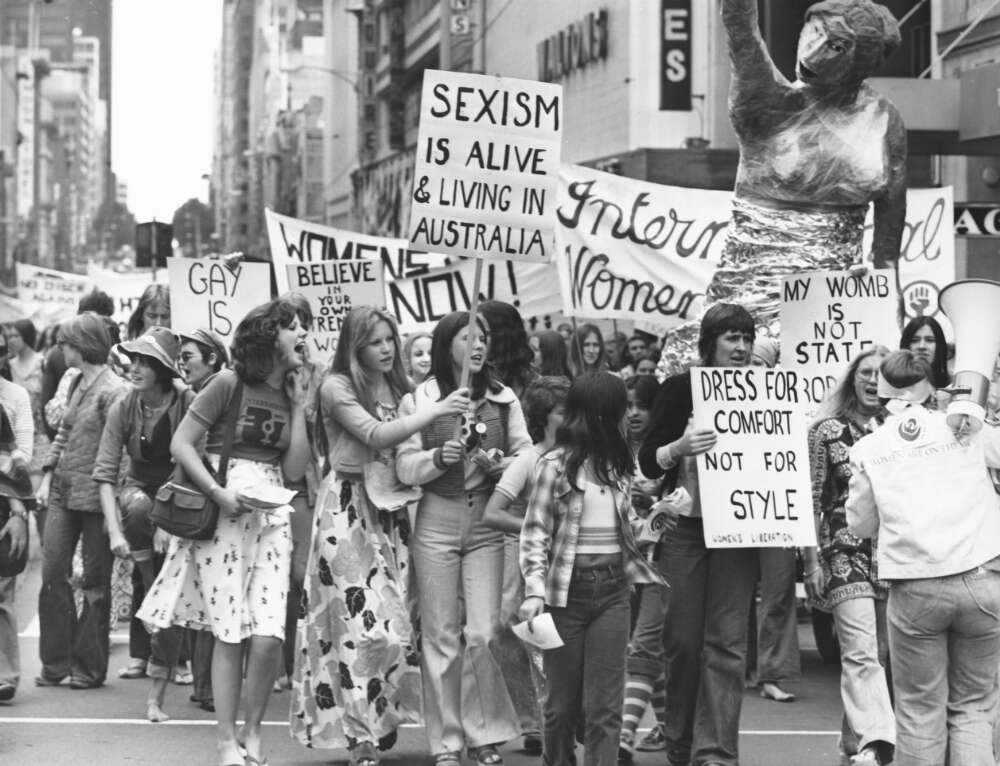
Find her-story: part one
Trove is home to the records of many significant Australian women’s rights groups and the voices of their leaders. You’ll also find stories of the largely anonymous masses who made change possible – the stamp-lickers and signature collectors; the newspaper article and letter writers; the people who volunteered at refuges; the meeting organisers and protest attendees; and many, many more.
1900-1970s
Early Australian feminists in the 19th century were heavily influenced by the British suffragette movement. The primary focus of Australian suffragettes - was women’s voting rights and the right for women to own property. They were also heavily involved welfare work for the protection of women and children.

Newspaper article and other historical records reveal the prejudices of the time. The Commonwealth Franchise Act of 1902 which gave women the right to vote, excluded Aboriginal and Torres Strait Islander people, Asians, Africans, Pacific Islanders and people with mental illness, and you had to be a subject of the King in order to vote.
Vida Goldstein
In 1903, Vida Goldstein was the first woman in the British Empire to stand for parliament. She was a tireless campaigner for women’s voting and emancipation rights. She also fought for equal property rights, raising the age of consent and marriage, improving access to birth control and improving working conditions for women.
View lists about Vida Goldstein curated by Trove community members

The Australian Federation of Women Voters
Formed in 1921, the Australian Federation of Women Voters fought for gender equality and sought to educate women from all political parties for over 50 years. During this time, they drafted and supported various bills, including those that gave women the right to legally keep their nationality after marriage, serve in juries and earn fair wages, and worked internationally with other women's rights and peacekeeping organisations.

Operating at state, federal and international levels, the Federation’s first president was Bessie Rischbieth.
Explore the records of the Australian Federation of Women Voters and read correspondence about the Australian women’s suffrage movement and more in the papers of Bessie Rischbieth. Digitisation of AFWV papers was funded by donation to the National Library of Australia’s 2021 Tax Time Appeal.
The Second Wave, or the Women’s Liberation Movement, was at its height in the 1960s and 1970s. Like first wave feminists their goal was equality for women and general human rights for all people. These women lobbied for anti-discrimination legislation, equal opportunity policy, no-fault divorce and subsidised childcare.

One catalyst for this movement was the publication of Germaine Greer’s The Female Eunuch.
Listen to Germaine Greer speech at the National Press Club on 19 January 1972.
A practical example of the changing times was when the Elsie Women’s Refuge was set up by members of the Sydney Women’s Liberation movement, including Anne Summers.
Explore the history of Elsie Women’s Refuge in Trove newspapers
Read part two, exploring feminism in Australia from the 1980s to today.
Tell Her-Story
Have you used Trove to access or research an Australian women’s history? Is there a great collection or story we’ve missed? The Trove community have been sharing their amazing discoveries and research on social media. Join the conversation on Facebook and Twitter.
You can also
-
sign up for a free Trove account
-
subscribe to our monthly Trove Treasures newsletter
-
read more great community stories.